
Asian Journal of Organic Chemistry
Scope & Guideline
Advancing the frontiers of organic chemistry.
Introduction
Aims and Scopes
- Synthetic Methodologies:
The journal showcases novel synthetic strategies, including multicomponent reactions, organocatalysis, and metal-catalyzed transformations, highlighting advancements in organic synthesis. - Catalysis:
Research on various catalytic systems, including transition metal, organocatalyst, and photocatalyst applications, is a focal point, with an emphasis on efficiency and sustainability in chemical processes. - Functionalization of Organic Compounds:
Papers often explore methods for the functionalization of organic molecules, including selective C-H activation and modifications of complex substrates to yield valuable derivatives. - Heterocyclic Chemistry:
The synthesis and application of heterocyclic compounds are prominent, addressing the development of new heterocycles and their derivatives with biological relevance. - Photochemistry and Photocatalysis:
The journal features studies on photochemical reactions and photocatalytic processes, showcasing the use of light in driving organic transformations. - Green Chemistry:
There is a consistent focus on environmentally friendly synthetic methods, including solvent-free reactions and the use of renewable resources in organic synthesis. - Molecular Design and Properties:
Research includes the design of new organic materials, such as sensors and luminescent compounds, often investigating their physical properties for applications in various fields.
Trending and Emerging
- Sustainable Chemistry:
An increasing number of articles focus on green chemistry and sustainable practices, emphasizing the use of renewable resources and environmentally friendly methodologies. - Photoredox Catalysis:
There is a notable rise in research involving photoredox catalysis, where light-driven reactions are harnessed for organic transformations, reflecting the growing interest in utilizing photochemical processes in synthetic chemistry. - Asymmetric Synthesis:
Emerging trends in asymmetric synthesis techniques, particularly using novel organocatalysts and chiral reagents, are increasingly prevalent, showcasing advancements in producing enantiomerically pure compounds. - Metal-Free Reactions:
Research on metal-free catalytic systems is gaining momentum, with a focus on developing efficient and sustainable synthetic routes without the need for traditional metal catalysts. - Functional Materials Development:
The journal is publishing more articles on the design and synthesis of functional materials with applications in electronics, sensors, and photonics, indicating a trend towards applied organic chemistry. - Bioconjugation and Drug Development:
There is a growing emphasis on bioconjugation techniques and the synthesis of bioactive compounds, particularly in the context of drug discovery and development.
Declining or Waning
- Traditional Organic Synthesis:
There seems to be a decreasing emphasis on classical organic synthesis techniques, with newer methodologies such as organocatalysis and photocatalysis gaining more traction. - Non-selective Reactions:
Papers focusing on non-selective or less efficient synthetic approaches are becoming less common, as the field trends towards more selective and efficient methods. - Synthesis of Simple Organic Molecules:
Research articles concentrating on the synthesis of simple organic compounds have diminished, likely as researchers seek more complex and functionally diverse molecules. - Conventional Analytical Techniques:
There appears to be a decline in studies solely reliant on traditional analytical methods, with a shift towards more integrated approaches that combine synthesis with advanced characterization techniques.
Similar Journals

SynOpen
Pioneering Research, Transforming IndustriesSynOpen is an esteemed open-access journal published by GEORG THIEME VERLAG KG, based in Germany, dedicated to advancing the fields of Biomaterials, Catalysis, Materials Science, and Organic Chemistry. Since its inception in 2017, the journal has established itself as a vital platform for researchers wishing to disseminate their findings in a rapidly evolving scientific landscape, earning a commendable Q2 ranking in Materials Science (miscellaneous) and Q3 in other key categories for 2023. With an increasing impact on its disciplines, SynOpen aims to foster interdisciplinary collaboration and innovation by providing unrestricted access to high-quality research, thus promoting a broader reach and visibility for authors. Scholars, professionals, and students alike can benefit from the comprehensive range of topics covered, as the journal's commitment to presenting cutting-edge studies and methodologies positions it as a crucial resource for contemporary scientific inquiry.
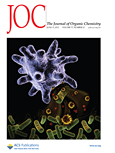
JOURNAL OF ORGANIC CHEMISTRY
Unveiling the Secrets of Organic ChemistryJournal of Organic Chemistry, published by the American Chemical Society, is a prestigious peer-reviewed journal dedicated to advancing the field of organic chemistry. With an ISSN of 0022-3263 and an E-ISSN of 1520-6904, this journal has established itself as a key platform for disseminating high-quality research since its inception in 1936. Residing in the Q2 category for Organic Chemistry as of 2023, it ranks #64 out of 211 in Scopus, positioning itself within the top 69th percentile of its field. Researchers and professionals can access vital findings and innovative methodologies that drive the understanding and application of organic chemical principles. Although the journal is not open access, it remains a crucial resource in academia and industry, contributing significantly to the scientific community's knowledge base. For detailed insights and cutting-edge research, the journal continues to be an essential read for those engaged in the dynamic and evolving landscape of organic chemistry.

ORGANIC SYNTHESES
Shaping the Future of Organic ChemistryORGANIC SYNTHESES is a prestigious journal dedicated to the field of organic chemistry, published by ORGANIC SYNTHESES INC. Since its inception in 1946, the journal has served as a vital platform for researchers, educators, and practitioners in chemistry, showcasing significant findings and methodologies that advance the discipline. Although it currently does not offer open access, it is recognized for its rigorous peer-review process and its contribution to standardizing organic synthesis methods. With an ISSN of 0078-6209 and an E-ISSN of 2333-3553, the journal's impact reflects its quality, with a current Scopus ranking placing it in the fourth quartile in both Organic Chemistry and Physical and Theoretical Chemistry. This positioning underscores its critical role in fostering knowledge and innovation within these fields. Researchers and students alike will find ORGANIC SYNTHESES an essential resource for staying informed on contemporary practices and discoveries in organic synthesis.

SYNTHESIS-STUTTGART
Connecting Ideas, Catalyzing Innovations in Chemistry.SYNTHESIS-STUTTGART
Published by the esteemed Georg Thieme Verlag KG, SYNTHESIS-STUTTGART stands as a vital resource in the field of Chemistry, specifically focusing on Organic Chemistry and Catalysis. With an impressive publication history dating back to 1970 and continuing through 2024, it serves as a platform for innovative research and developments in synthetic methodologies and their applications. The journal holds a significant impact factor, reflecting its influence within the academic community, and is recognized in the Scopus rankings as a reputable source in its categories, with a rank of #99/211 in Organic Chemistry and #43/68 in Catalysis. Researchers, professionals, and students alike can benefit greatly from its content, which upholds rigorous peer-review standards and contributes to the global discourse in these critical scientific domains.

INDIAN JOURNAL OF HETEROCYCLIC CHEMISTRY
Unveiling New Horizons in Chemical InnovationINDIAN JOURNAL OF HETEROCYCLIC CHEMISTRY, published by CONNECT JOURNALS, is a vital resource in the fields of organic chemistry and biochemistry, aiming to advance research and promote innovation within the realm of heterocyclic compounds. Established in 1996, this journal has successfully converged into an influential publication with a commitment to disseminating high-quality, peer-reviewed research articles that enhance the understanding of heterocyclic chemistry applications. Although it currently holds a Q4 quartile ranking in both biochemistry and organic chemistry according to the 2023 categorizations, its broader contributions to the scientific community should not be underestimated, as it seeks to support the ongoing dialogue among researchers, professionals, and students. The journal operates from Ghaziabad, India, providing open access to its publications, thereby fostering a collaborative and informative environment for its international readership. With an ISSN of 0971-1627 and a special focus on contemporary challenges and developments in the field, the INDIAN JOURNAL OF HETEROCYCLIC CHEMISTRY is poised to make a significant impact as it continues to evolve through 2024 and beyond.
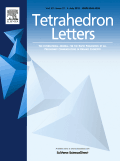
TETRAHEDRON LETTERS
Innovative Insights in Biochemistry and Organic ChemistryTETRAHEDRON LETTERS, published by Pergamon-Elsevier Science Ltd, is a leading journal in the fields of Biochemistry, Drug Discovery, and Organic Chemistry, with a rich legacy since its inception in 1959. This prestigious journal serves as a vital resource for researchers and professionals dedicated to advancing the understanding of chemical sciences, featuring high-impact research that influences both academic and practical applications. Although it is currently classified in the third quartile across its categories for 2023, its rigorous peer-review process ensures the publication of quality research that contributes to the scientific community. With an ISSN of 0040-4039 and an E-ISSN of 1873-3581, TETRAHEDRON LETTERS is easily accessible for those in the academic landscape seeking to stay abreast of innovative developments. Researchers, professionals, and students alike will find invaluable insights and collaborative opportunities within the pages of TETRAHEDRON LETTERS, making it an essential read for anyone involved in the chemical sciences.
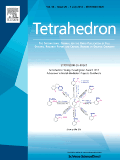
TETRAHEDRON
Exploring the molecular universe since 1957.TETRAHEDRON, published by Pergamon-Elsevier Science Ltd, is a leading peer-reviewed journal that has been pivotal in advancing the fields of Biochemistry, Drug Discovery, and Organic Chemistry since its inception in 1957. With an ISSN of 0040-4020 and an E-ISSN of 1464-5416, this journal provides a platform for the dissemination of cutting-edge research and innovative methodologies that contribute significantly to the scientific community. Recognized for its rigorous editorial standards, TETRAHEDRON has been categorized in the Q3 quartile for 2023 across its relevant fields, reflecting its solid impact within the scientific sphere. Despite the current absence of Open Access options, the journal continues to engage a diverse readership, offering invaluable insights and advancements that fuel both academic and industrial applications. With an ongoing commitment to excellence, TETRAHEDRON remains an essential resource for researchers, professionals, and students aiming to stay at the forefront of chemistry and biochemistry research.
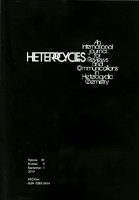
HETEROCYCLES
Illuminating the Complex World of HeterocyclesHETEROCYCLES, published by the Japan Institute of Heterocyclic Chemistry, stands as a pivotal journal within the fields of Analytical Chemistry, Organic Chemistry, and Pharmacology. With its ISSN 0385-5414 and E-ISSN 1881-0942, HETEROCYCLES has been a respected platform for scholarly work since its establishment in 1983, featuring innovative research up until 2022. While currently not open access, the journal is renowned for its rigorous peer-review process, ensuring the dissemination of high-quality research. Despite its Q4 ranking in the 2023 quartiles for its categories, it plays a crucial role in bridging gaps in knowledge and advancing the discourse on heterocyclic compounds, which are vital in drug discovery and development. Researchers, professionals, and students who are engaged in chemistry and pharmacology will find HETEROCYCLES an essential source of cutting-edge studies, insights, and an opportunity to contribute to the evolving landscape of these scientific fields.

ARKIVOC
Unlocking the Potential of Organic Chemistry ResearchARKIVOC is an esteemed open-access journal dedicated to the field of Organic Chemistry, published by ARKAT USA INC. Since its inception in 2000, ARKIVOC has aimed to disseminate high-quality research and advancements in organic chemistry, fostering an international exchange of knowledge within this ever-evolving discipline. With its ISSN 1551-7004 and E-ISSN 1551-7012, the journal is committed to providing accessible content free of charge to researchers, students, and professionals around the globe. Although currently categorized in the fourth quartile of Organic Chemistry with a Scopus rank of #188 out of 211, ARKIVOC continues to encourage the publication of innovative works and critical reviews that highlight emerging trends and methodologies in organic synthesis, reaction mechanisms, and material sciences. Its open-access model since 2000 ensures that valuable contributions to scientific knowledge are widely available, promoting collaboration and discovery. The journal is based in the United States, with its editorial office located at the University of Florida, under the guidance of prominent chemists. ARKIVOC provides an essential platform for those deeply engaged in organic chemistry research, supporting the advancement of science for future generations.
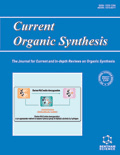
CURRENT ORGANIC SYNTHESIS
Unlocking the Secrets of Organic CompoundsCURRENT ORGANIC SYNTHESIS, published by Bentham Science Publishers Ltd, is a leading journal in the field of organic chemistry and biochemistry that serves as a vital platform for researchers and professionals advancing the synthesis of organic compounds. With an ISSN of 1570-1794 and an E-ISSN of 1875-6271, it boasts a significant impact within its category, ranked in the Q3 quartile for both biochemistry and organic chemistry as of 2023. The journal covers innovative research and reviews that enhance our understanding of organic synthesis methodologies, showcasing contributions that advance the field. Operating from Sharjah, United Arab Emirates, CURRENT ORGANIC SYNTHESIS has evolved since its inception in 2005, providing access to a wealth of information essential for students, professionals, and researchers alike. While it currently does not offer open access, the journal continues to maintain a strong community of scholars dedicated to fostering dialogue and innovation in the organic sciences.